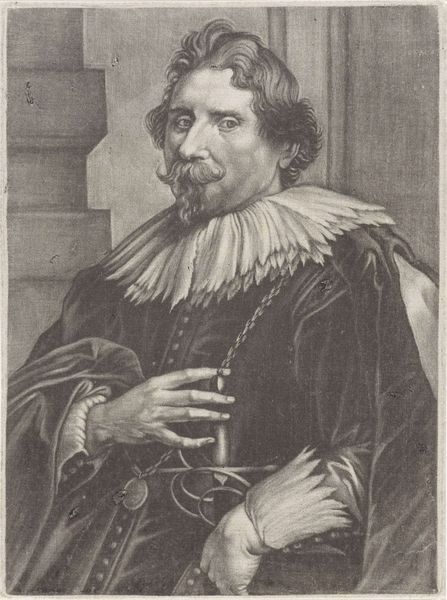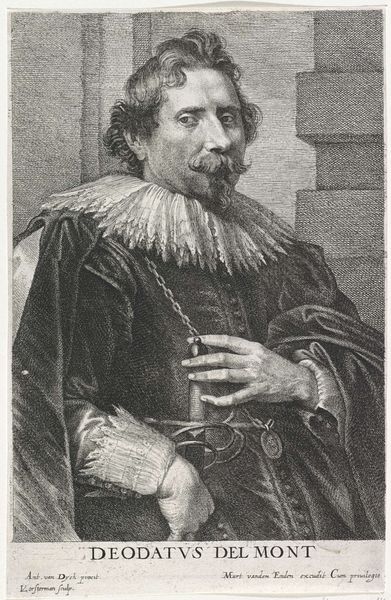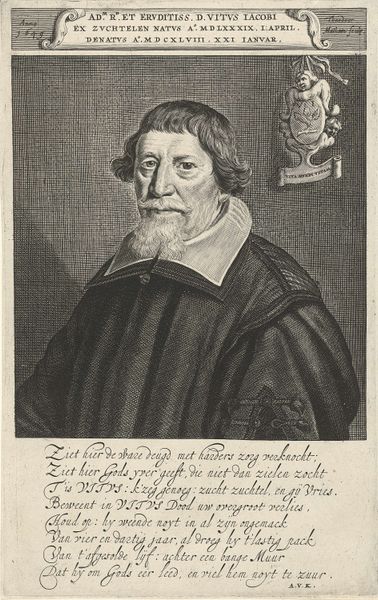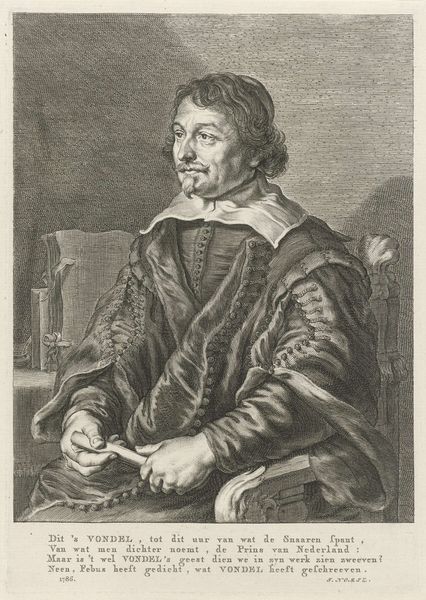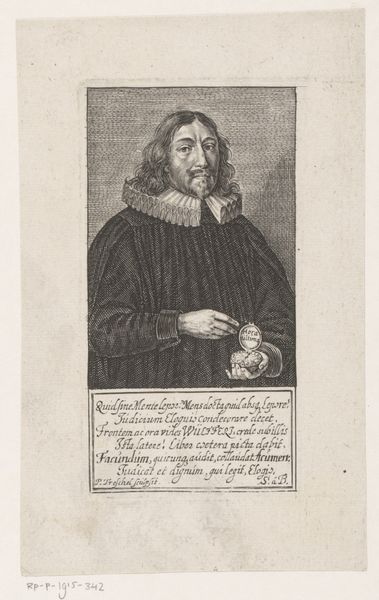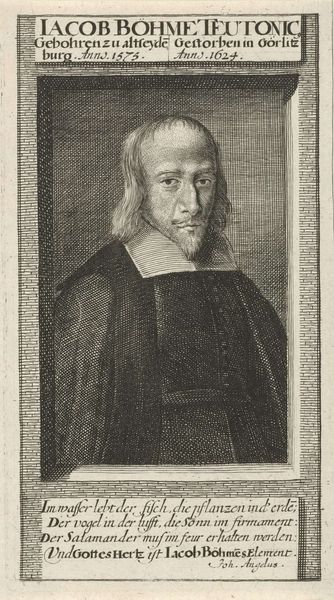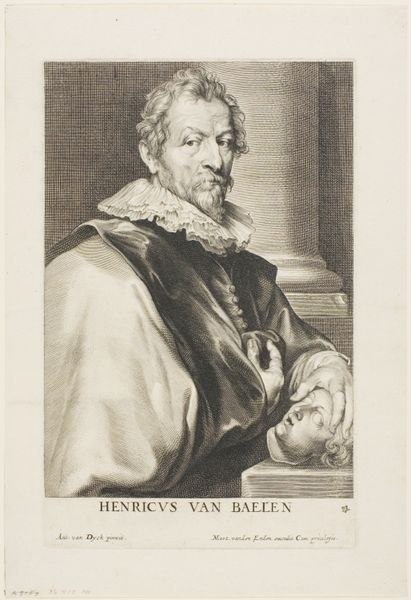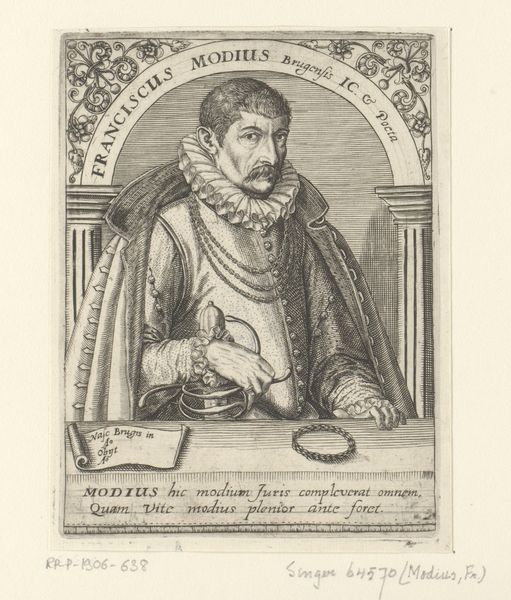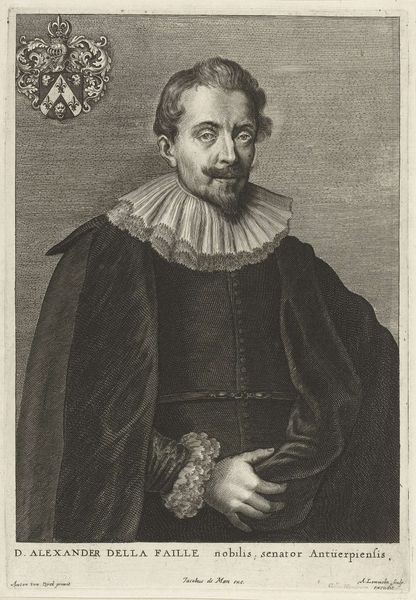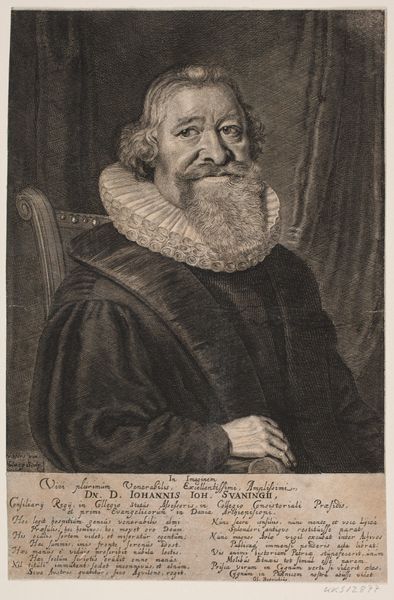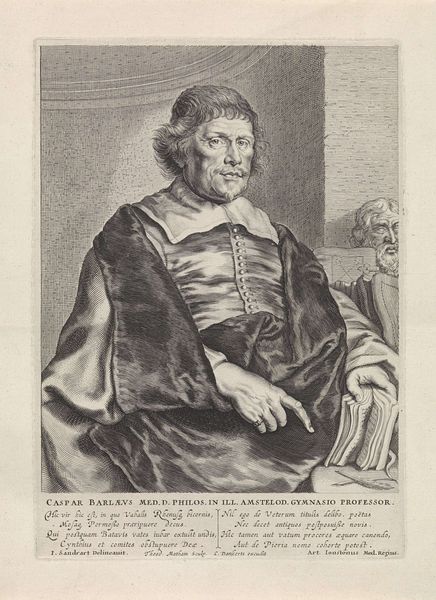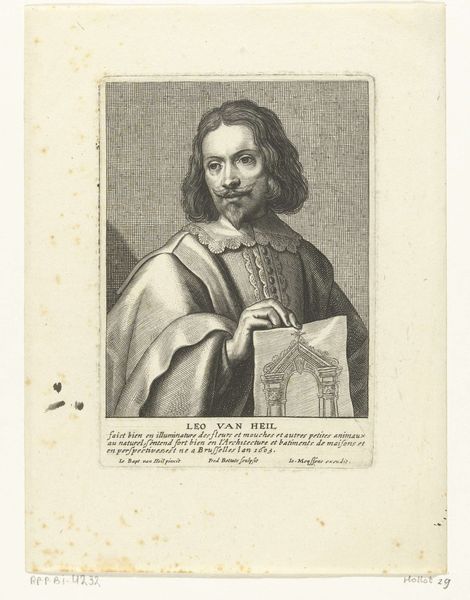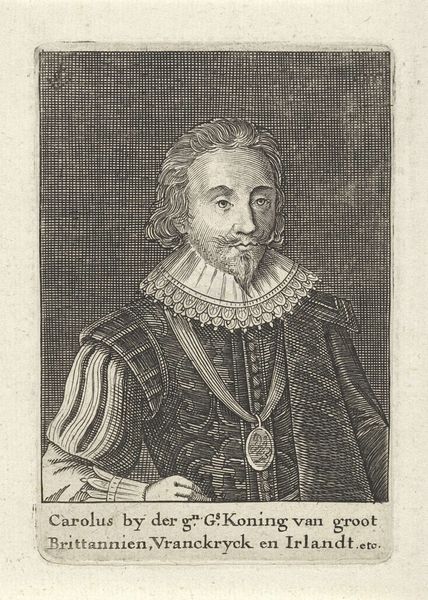
print, engraving
#
portrait
#
baroque
#
dutch-golden-age
# print
#
engraving
Dimensions: height 235 mm, width 150 mm
Copyright: Rijks Museum: Open Domain
Curator: We’re looking at Lucas Vorsterman I's engraving "Portret van Deodat van der Mont," made sometime between 1630 and 1646, part of the Rijksmuseum collection. Editor: The man looks imposing, despite being a print. His stern expression dominates the image. It’s quite captivating in its textures and tonality, particularly for the period. Curator: Indeed, the engraving technique lends itself to intricate details. Observe the lines defining the folds of his elaborate ruff and the subtle gradations of shadow on his face, constructed through hatch marks. It's fascinating to examine how Vorsterman used such controlled marks to create such palpable volume. Editor: Beyond the technique, his attire and the object in his hand scream "status". That book-like item probably symbolizes knowledge, power and class. The Dutch Golden Age really embraced representing citizens with status. Curator: Certainly, and consider the implications of that precise rendering of clothing and the inclusion of what may indeed be a book, although the precise interpretation would certainly be strengthened with deeper historical knowledge. However, what interests me foremost is how Vorsterman organizes tonal value relationships throughout this print's compositional structure to produce this desired representational effect. The symmetry gives a classic feel. Editor: Yet there's a dynamic quality, perhaps due to the slightly off-center placement of his face and the way the light catches his features. Dutch artists used clothing and objects to hint at a life story, it almost turns the sitter into a puzzle, waiting to be interpreted through the context of symbols, creating a visual language. It makes me wonder about his intellectual contributions or role in society. Curator: Interesting ideas. The power of line in defining space and form is just striking. The cross-hatching technique particularly grabs your attention when viewed under close magnification. The linear strokes produce an astounding effect. Editor: It brings this moment and an important person in history back to us after 400 years, now permanently linked with the history of this work's creator. Curator: Yes. From a formal perspective, the controlled application of Vorsterman’s marks make this image so impactful even after all this time.
Comments
No comments
Be the first to comment and join the conversation on the ultimate creative platform.
